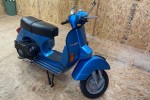
You've prepared for this day for a long time, and now it's here: the day you move into your new abode. Everything's packed and ready to go, now it's time to move. You hop into the truck, put on your seatbelt, turn the key in the ignition... and, crank, nothing. Silence.
You feel that stomach-churning, "this-can't-be-happening" moment. This is a bigger fear among more Canadians than you think. Take a look at this Quora thread and the experience of one Uhaul customer as a case-in-point:

If your U-Haul's giving you the silent treatment, keep calm and read on. You've just stumbled upon your life-saving guide. We'll be covering:
-
Delving into the primary reasons your U-Haul might not start.
-
Handy DIY solutions to explore before calling for help.
-
Steps to take if stranded far from help or at inopportune times.
Why Isn't My Truck Starting Up?
When your vehicle refuses to start, the usual suspects include a bad battery, disconnected or corroded cables, a malfunctioning alternator, or a starter issue.
1. Weakening Battery
-
The car battery serves as the vehicle's power storage, providing the necessary juice to start the engine and power electronic components. Over time, the battery's capacity diminishes, reducing its ability to hold a charge and power the vehicle. You might need a new battery.
-
Voltage Test: Use a multimeter to measure the battery voltage. A fully charged battery should read about 12.6 volts. If it's below 12 volts, the battery is likely drained.
-
Load Test: Auto stores often offer this service. It tests the battery's ability to hold voltage under load. If it drops significantly, the battery may be on its way out and needs to be replaced.
2. Disconnected or Corroded Cables

Battery cables transfer the current from the battery to the vehicle’s electrical system. Corrosion can create resistance, impeding the flow of electricity, while loose connections can halt it altogether, preventing the vehicle from starting.
-
Visual Inspection: Before touching anything, ensure the engine is off. Check the battery terminals for any signs of corrosion. Clean terminals often result in better conductivity.
-
Wiggle Test: Gently wiggle the cables. If they move easily, they're likely loose and need tightening.
3. Malfunctioning Alternator

The alternator replenishes the battery's charge and powers the car's electrical system when the engine is running. If it's malfunctioning, the battery can't recharge, leading to a drained battery even while you're driving.
-
Warning Light: Modern cars have an alternator warning light on the dashboard. If it's illuminated, it's a sign your alternator may not be charging the battery.
-
Voltage Test: With the engine running, measure the voltage across the battery using a multimeter. A reading between 13.7 to 14.7 volts typically indicates a functioning alternator. Lower readings suggest the alternator isn't charging the battery.
4. Starter Issue

The starter is responsible for cranking the engine when you turn the key. A malfunctioning starter can't set the engine in motion, preventing the vehicle from starting.
-
Listen Closely: When you turn the key, do you hear a clicking sound? If yes, but the engine doesn't start, the starter might be at fault.
-
Physical Inspection: Look for signs of damage or wear on the starter, like burnt areas or loose connections. However, accessing the starter can be challenging in some vehicles, so you might need a professional's help.
Handling U-Haul Emergencies: Quick and Essential Steps
If your U-Haul stalls in a potentially perilous situation, here's a concise guide to keep you safe:
-
Stay Calm: Begin by taking a deep breath and assessing your surroundings.
-
Activate Hazard Lights: This makes you visible to other drivers, especially in low-visibility conditions.
-
Move Off the Road: If feasible, maneuver your U-Haul to a safer spot away from main traffic.
-
Stay Inside if Unsafe Outside: On bustling highways or in risky areas, remain in the vehicle with your seatbelt fastened.
-
Reach Out: Dial U-Haul's emergency contact or roadside assistance. If the situation is more critical, contact local authorities.
-
Keep an Emergency Kit: Ensure it contains water, a flashlight, basic tools, a first-aid kit, and warm clothing for colder regions.
-
Conserve Battery: If waiting inside, limit the use of lights and electronics to save battery life.
-
Signal Distress: In remote areas without cell service, use an emergency triangle, flares, or a white flag to attract attention.
Prioritize safety over everything else. While getting the U-Haul functioning is vital, your well-being and that of any passengers is paramount. Always err on the side of caution.
Troubleshooting For a Uhaul That Won't Start

When you’re on a tight moving schedule, a U-Haul that won’t start can be a massive setback. But before you panic, consider some of these troubleshooting steps specifically tailored for rented moving trucks:
-
Check the Fuel Gauge: This might sound too basic, but sometimes, in the frenzy of moving, it can be easy to forget to refuel. Ensure there's enough gas in the tank.
-
Neutral Safety Switch: U-Haul trucks, like many vehicles, have a safety feature that prevents them from starting if they're not in 'Park' or 'Neutral.' Double-check the gear position and try starting again.
-
Examine Battery Connections: Rental trucks can see a lot of use, leading to wear and tear. Take a quick look at the battery terminals for any signs of corrosion or loose connections. If safe to do so, tighten any loose terminals.
-
Listen to the Sounds: Pay attention to any sounds when you attempt to start. A clicking noise might indicate a starter issue, while complete silence could point to a battery or connection problem.
-
Try the Headlights: Turn on the headlights. If they are dim or don't come on at all, you might be dealing with a battery problem.
-
Brake Safety Feature: Some U-Haul trucks require the brake pedal to be firmly pressed when starting. Ensure you’re pushing down on the brake as you turn the key.
-
Check the Dashboard: Look for any warning lights or messages. They can provide clues about specific issues, such as problems with the alternator or battery.
-
Master Kill Switch (if present): Some U-Haul trucks come equipped with a master kill switch to prevent theft. Ensure it's in the 'On' or 'Run' position before trying to start the truck.
If you’ve tried the above steps and the U-Haul still doesn't start, it's essential to contact U-Haul's roadside assistance or the rental location. They can offer guidance specific to the model you've rented or send assistance if necessary.
Remember, with rental vehicles, it's always best to err on the side of caution and consult with professionals rather than attempting significant fixes on your own.
What Should You Do If Your U-Haul Doesn't Start After Drop-off?
No worries on your end! Once you've returned the keys, your rental responsibilities are complete.
Should the dealer face any start-up issues with the truck, they're equipped to diagnose the cause, whether it's a battery that needs charging or replacement, a malfunctioning alternator, or another issue. Many dealers can replace a faulty battery on-site. If not, U-Haul ensures a replacement is provided.
For more extensive problems beyond a simple battery issue, the truck will be removed from service, and U-Haul will handle the necessary repairs.
Top Move Won't Let You Down
A Uhaul that won't start can leave a bad taste in your mouth when it comes to DIY moving.
If you're looking for a smooth move into your new home with no hiccups, consider hiring a professional moving service on Top Move. All you have to do is answer some questions and receive competitive quotes from local movers directly to your email inbox.
No heavy-lifting. No packing. No planning. And definitely no car breakdowns.
FAQs
How do you unlock a U-Haul steering wheel?
If the steering wheel is locked, could you gently turn it while starting the car? The wheel may be pressuring the steering lock.
How do you unlock a U-Haul truck?
Call customer care or a locksmith if you lock the key in the U-Haul.
Why is my semi-truck cranking but not starting?
A semi-truck with comparable symptoms may have fuel system, battery, starter motor, or engine troubles. Seek professional mechanic advice.
How do I make sure my U-Haul doesn't get broken into?
Roll up windows, lock doors, and hide valuables when returning your U-Haul. Following simple car security measures can deter break-ins.
What do our customers say?



























